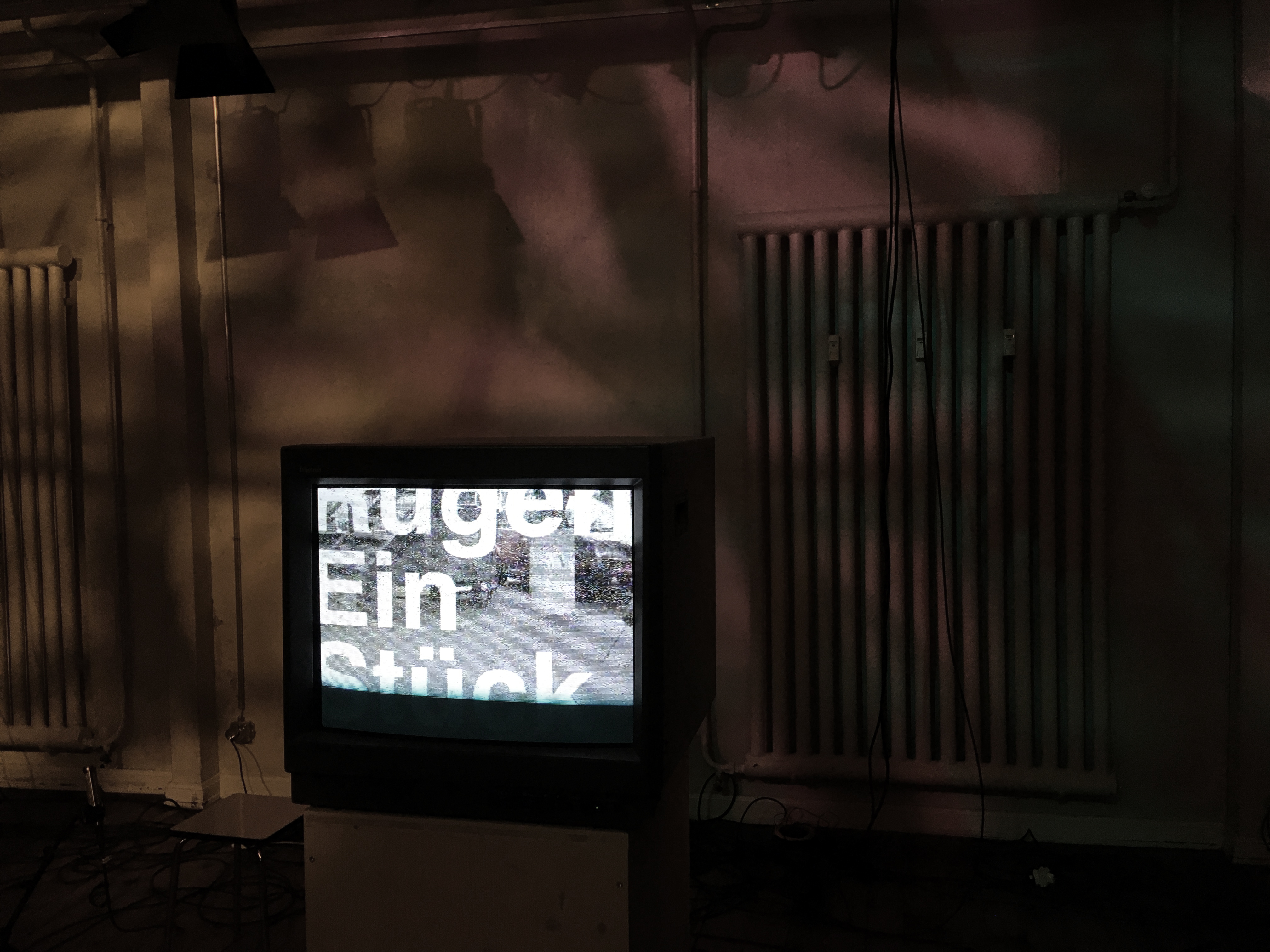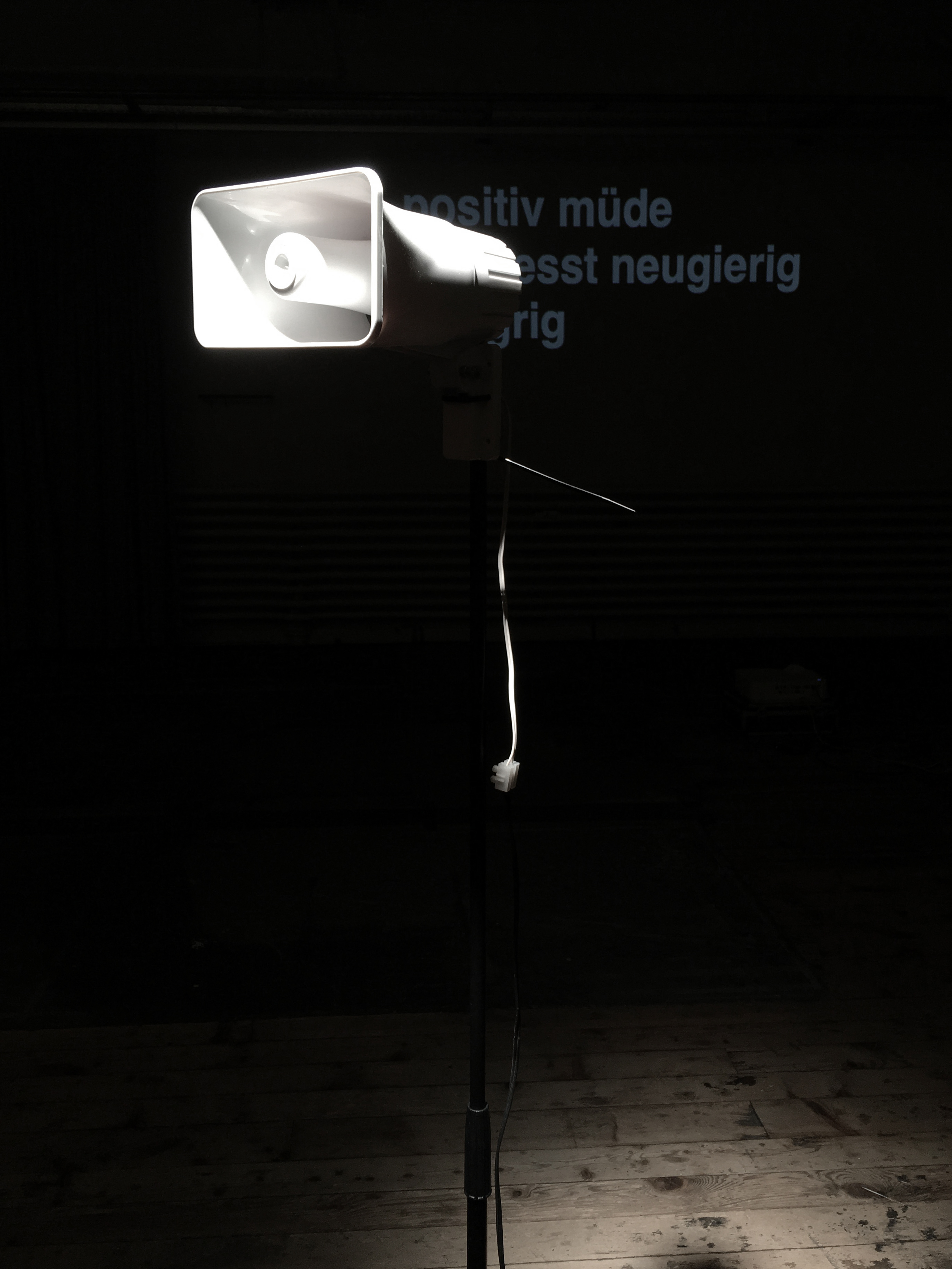In the Plains of a Foreign Land
Media performance, 2020A performative landscape for heavily amplified bass flute, viola, cello, Casio keyboard, voices and electronics
With a media assemblage consisting of megaphones, video projections, field recordings and text fragments
Duration 60 min
Written by Marcel Zaes for Ensemble ö!
2020
Premiered by Ensemble ö!
in 2020
under the German title
“(…) Ebene eines fremden Landes”
Asia Ahmetjanova - keyboards & voice
Riccarda Caflisch - bass flute
Genevieve Camenisch - viola & voice
Christian Hieronymi - cello
David Sontòn Caflisch - artistic direction of Ensemble ö!
Franziska Ruoss - idea & production
Moritz Müllenbach - live sound & audio recording
Annie Rüfenacht - live video tech
“In the Plains of a Foreign Land” springs from an initial impulse about the (un)documentability of travel. Conceptually developed by Ruoss and Zaes, they asked about the ways societies document their travel as a way of building their view of the “world” – if not their “worlds” in itself. Ruoss and Zaes, with this work, looked at journaling as a way of writing, building, and inscribing worlds; journaling as a critical project indebted to colonial expansion on the one hand, and to its potential for individual expression and as a room-making device on the other hand: journaling also as a device to build imaginary worlds that otherwise would cease to exist.
Made shortly before the onset of the global pandemic – which paradoxically would increasingly emphasize the need for imaginary travel – the musicians of the ensemble ö! were each prompted, over the course of several months, to document various journeys. Equipped with ubiquitous everyday technology – personal phones, cameras, audio recorders, pencils and paper notebooks – they selectively yet arbitrarily recorded trips close and far. They documented journeys ranging from everyday routines such as going for groceries to more extensive travels to remote areas in the alps, to natural settings, or to urban centers across Europe; from train rides to hikes in the woods. Collaboratively, they wrote an archive of idiosyncratic travel ephemera in sound, image, and text: field recordings, phone pictures, and fragmentary notes.
This archive constitutes the material out of which Zaes crafted a media-informed concert situation for a live audience. With this work, Zaes expanded the format of the chamber music concert by integrating the musicians of ensemble ö! with a media assemblage. The musical composition “In the Plains of a Foreign Land” blends the environmental, participatory field recordings from the archive with a live-played instrumental world made of noise and otherworldly pitch – following a Western early 20th century transcription of a musical scale from the Pacific; a statement about imperialist othering and musical exoticism. Both the field recording and the sustained peculiar harmonies are subject to be rhythmically organized and rhythmized by a technological system that “cuts” them off. Thereby, a sound world is crafted that emphasizes the fragmentary nature of the disparate source materials that are used to build this world.
On a visual level, the extended live concert is set amidst an installation. The four musicians are positioned in large distances from one another, each lit with a local spotlight in an otherwise somber room; a sense of disconnect is produced within what is supposed to be a musical “ensemble.” Around and between the musicians, there is an array of several old-fashioned TV monitors on pedestals and projections on the back walls. Participant imagery gets remixed and frenetically circulates across the screens. Its overtly pixelated and shaking nature along with sudden cuts between heterogenous, non-related materials stress the ephemeral and arbitrary aspect of the collected materials – that all oddly and increasingly look alike the longer they roll past the monitors. Yet the processed aesthetics also render clear the “archive-ness” of the source materials. Taken on contemporary devices, when played back, they already look like from a time past. The visual world smells of “vintage,” of some exotic nostalgia from another world, of ephemera that are dated the moment they become visible. Simultaneously, over the course of the evening, fragmentary text lines from the participants’ notebooks – both projected on the walls and occasionally voiced by two musicians – add a semantic level of observation that temporarily (re)contextualize, and add meaning, to the world that is built at every single moment of the piece anew.
“In the Plains of a Foreign Land” critically navigates charged issues such as “foreign lands,” “exotism,” and the “documentary;” it remains critical about worldbuilding as indebted to an agenda; it methodologically blends everyday technology and mobile phones with image processing and soundscape composition; it contrasts the “in here” with the potential of an – if only imaginary – “out there.” The associative space that it gives rise to blurs the lines between that which is, and that which is remembered. What remains is a sensory world of seeing and listening, of smelling and imagining.
— Marcel Zaes, writing from Shenzhen in 2022








